Large social and economic inequalities persist among UK doctors, study reveals
Powered by WPeMatico
Powered by WPeMatico
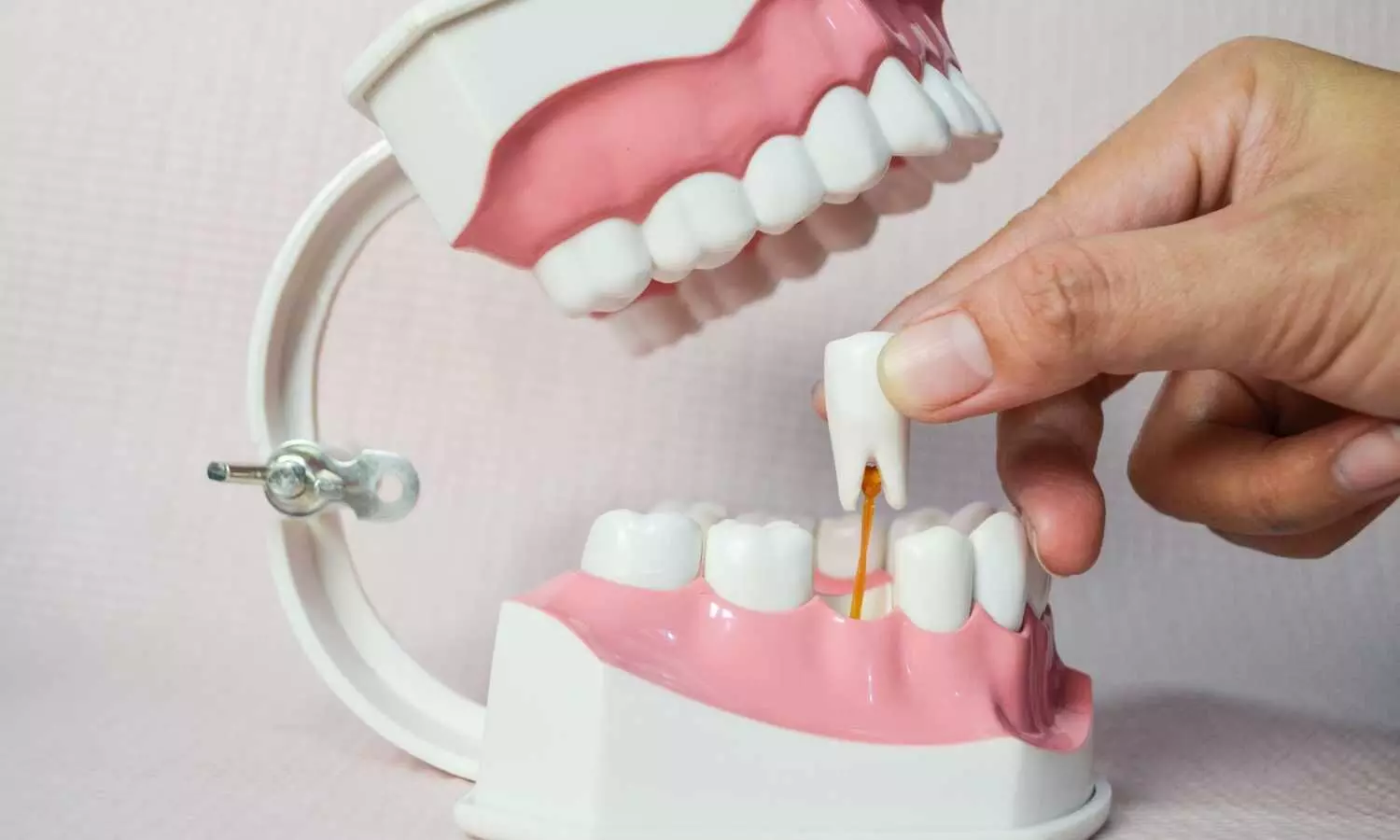
Researchers have found in a new study that tooth loss is highly associated with stroke risk, with patients having increased tooth loss having a considerably higher risk of stroke. The research provides robust evidence of the association between tooth loss and stroke, with additional missing teeth increasing risk by 2%. The study was published in the Journal of Stroke and Cerebrovascular Diseases by Dajin Li. and colleagues.
Stroke remains a heavy burden of global disease, leading not only to premature death but also to disability for a lifetime in survivors. Oral health, frequently neglected, is crucial for prevention and management of systemic disease. Tooth loss is among the most prevalent oral diseases in adults and is usually associated with periodontal disease, inadequate oral hygiene, and chronic systemic inflammation.
The research was cross-sectional analysis with data drawn from the National Health and Nutrition Examination Survey (NHANES) involving 23,473 adults. The number of missing teeth was recorded for each participant by professional dentists. Multivariable logistic regression models with adjustment for confounders were used to assess tooth loss and the risk of stroke. Restricted cubic spline (RCS) analysis was also used to evaluate the nonlinear association between tooth loss and stroke. Subgroup analyses were conducted to verify if the association was homogeneous across various population groups.
Results
• Of the 23,473 participants in the study, 4.19% had a history of stroke.
• The stroke-diagnosed participants had more missing teeth than those without stroke.
• Following the control of multiple variables, each extra missing tooth raised the odds of stroke by 2% (Odds Ratio [OR] = 1.02, 95% Confidence Interval [CI]: 1.01–1.03).
• In addition, those with complete tooth loss carried a 163% increased risk of stroke among those with no missing teeth (OR = 2.63, 95% CI: 1.90–3.62).
• The RCS analysis validated a nonlinear, positive association between tooth loss and stroke risk, showing that stroke risk increases more steeply with increasing numbers of missing teeth.
The study showed that there was a strong positive correlation between missing teeth and stroke risk in U.S. adults. These findings reinforce the importance of oral health in the prevention of serious systemic disease. Large-scale, well-controlled trials will ultimately be required to replicate these findings and support the inclusion of oral health interventions as a component of stroke prevention programs.
Reference:
Powered by WPeMatico

Daily myo-inositol supplementation in pregnancy was not found to reduce the risk of severe complications like gestational diabetes, preeclampsia, or preterm delivery in polycystic ovarian syndrome (PCOS) women, according to a recent study published in JAMA. The research concluded that myo-inositol, in spite of previous indications of its possible usefulness, had no notable impact in avoiding these events. The study was conducted by Anne W. and colleagues.
PCOS is a prevalent endocrine disorder in women of childbearing age and is highly correlated with increased risks of pregnancy complications. Pregnant women with PCOS have a higher likelihood of gestational diabetes, preeclampsia, and preterm birth. Myo-inositol, a nutritional supplement, has been extensively investigated for its potential in enhancing insulin sensitivity and ovarian function. Earlier small studies had indicated potential advantages in lowering pregnancy complications but were not done on a large scale using randomized controlled trials. This trial, which was performed in 13 hospitals in the Netherlands, sought to settle whether myo-inositol supplementation could offer quantifiable protection during pregnancy.
The study was set up as a double-blind, placebo-controlled, randomized trial and involved 464 pregnant women with PCOS. Participants were recruited from June 2019 to March 2023, with last follow-up being finished in December 2023. They were divided at random in a 1:1 ratio to receive either myo-inositol (2 g with 0.2 mg folic acid twice daily, n = 230) or placebo (0.2 mg folic acid only, n = 234) until delivery. The main outcome was a composite of gestational diabetes, preeclampsia, or preterm delivery before 37 weeks’ gestation.
Results
• Mean participant age was 31.5 years, with a high percentage identifying as White (86.1%, n = 395) and a smaller percentage as Asian (3.9%, n = 18).
• Biochemical hyperandrogenism occurred more frequently at baseline in the myo-inositol group (29.0%, n = 53 of 180) than in the placebo group (18.5%, n = 37 of 193).
• A primary outcome event was observed in 25.0% (n = 56) of patients treated with myo-inositol and in 26.8% (n = 61) of those treated with placebo.
• This corresponded to a relative risk of 0.93 (95% CI, 0.68–1.28; P = 0.67), showing no statistically significant difference between both groups.
This randomized controlled trial showed that myo-inositol supplementation in pregnancy did not have any important effect on the prevention of gestational diabetes, preeclampsia, or preterm delivery in PCOS women. While safe and well-tolerated, myo-inositol should not be regarded as an effective means of prevention of pregnancy complications in this population.
Reference:
Powered by WPeMatico

Researchers have discovered in a new study that teenage girls suffering from dysmenorrhoea, painful periods are more likely to experience chronic pain in later life. The results are based on the UK’s large Avon Longitudinal Study of Parents and Children (ALSPAC) birth cohort study. The research identified that the adolescents with moderate to severe dysmenorrhoea at 15 years were more likely to be reporting chronic pain at age 26 compared to their peers who did not experience menstrual pain. The study was published in The Lancet: Child & Adolescent Health by Rachel R. and colleagues.
The study involved 1,157 individuals from childhood to early adulthood. From ages 8 through 17 years, participants were queried each year about menstrual pain. At age 15, they completed a question about whether their dysmenorrhoea was mild, moderate, or severe. At age 26, participants were queried whether they had had pain ≥3 months in the preceding year.
Researchers employed multivariable logistic regression models that were adjusted for a variety of confounders, such as ethnicity, maternal education, adverse childhood experiences, pre-menarchal depressive symptoms, BMI, smoking, diet factors, and physical activity. Mediation analysis was conducted in order to determine if anxiety and depression following dysmenorrhoea was responsible for the association between menstrual pain and subsequent chronic pain.
Results
• At age 15, 691 (59.7%) of the sample had moderate or severe dysmenorrhoea. At age 26, 307 (26.5%) had chronic pain.
Prevalence of chronic pain was closely associated with severity of dysmenorrhoea in adolescence:
• No dysmenorrhoea: 32 out of 185 (17.3%) had chronic pain at age 26.
• Mild dysmenorrhoea: 62 out of 281 (22.1%) had chronic pain.
• Moderate dysmenorrhoea: 157 out of 524 (30.0%) had chronic pain.
• Severe dysmenorrhoea: 56 of 167 (33.5%) had chronic pain.
Adjusted relative risks (RRs) for chronic pain at age 26 were:
• Mild dysmenorrhoea: RR = 1.23 (95% CI 0.85–1.74, p=0.27)
• Moderate dysmenorrhoea: RR = 1.65 (95% CI 1.22–2.18, p=0.0021)
• Severe dysmenorrhoea: RR = 1.76 (95% CI 1.23–2.39, p=0.0030)
These are equivalent to absolute risk increases of:
• 4.8 percentage points (95% CI –2.5 to 12.1) for mild
• 12.7 percentage points (95% CI 5.9–19.4) for moderate
• 16.2 percentage points (95% CI 7.2–25.2) for severe dysmenorrhoea
Adolescent dysmenorrhoea was also shown to substantially raise the risk of adult chronic pain, particularly of moderate or severe intensity. Menstrual pain in adolescence should be regarded as a key public health problem, the authors opine. Early detection and good management are essential for lessening future health burdens.
Reference:
Reid-McCann, R., Poli-Neto, O. B., Stein, K., Dixon, S., Cox, E., Coxon, L., Fazel, M., Noonan, M., Sharp, G. C., Zondervan, K., & Vincent, K. (2025). Longitudinal association between dysmenorrhoea in adolescence and chronic pain in adulthood: a UK population-based study. The Lancet. Child & Adolescent Health. https://doi.org/10.1016/s2352-4642(25)00213-5
Powered by WPeMatico
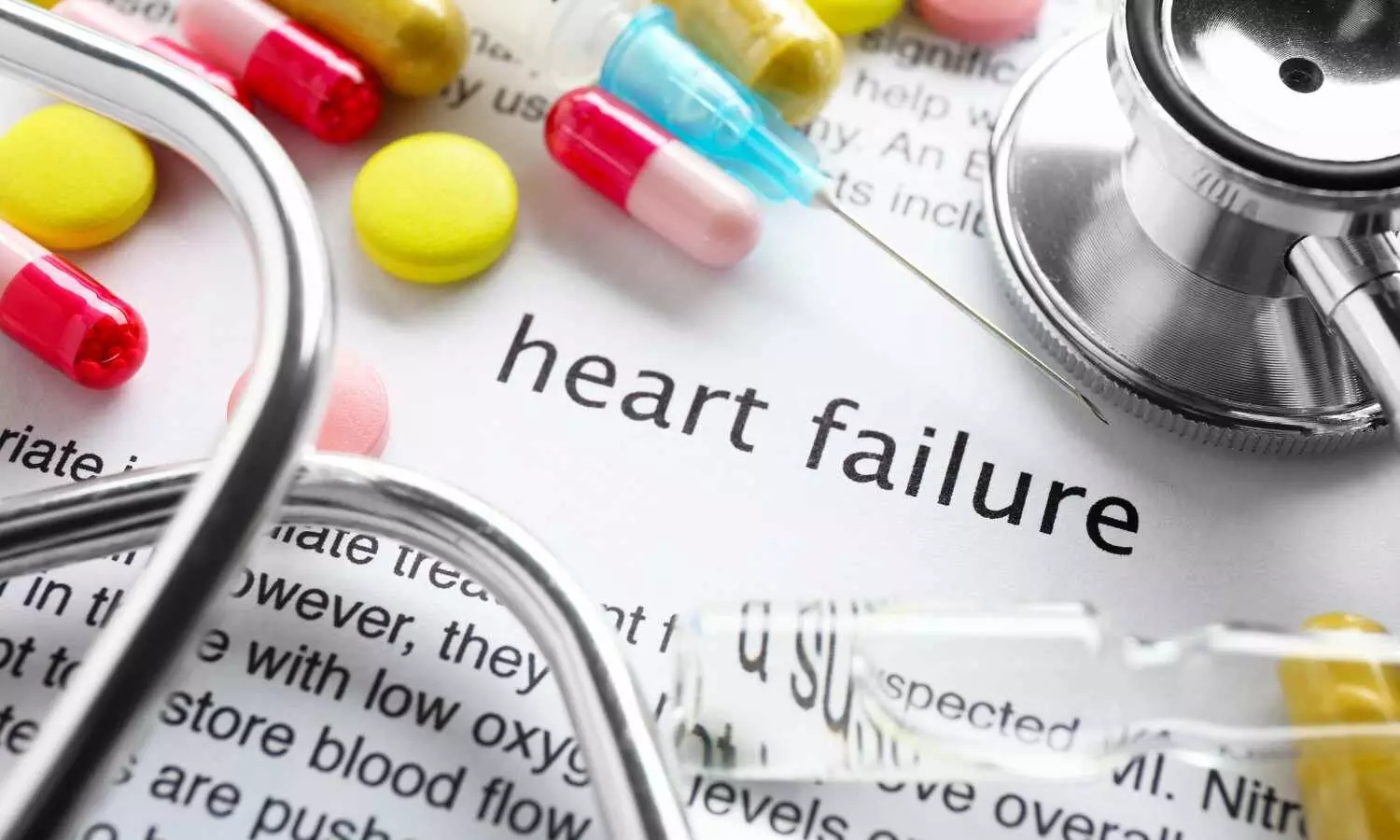
A new retrospective cohort study published in JAMA Internal Medicine has found that pregabalin, a commonly prescribed nonopioid analgesic, is associated with a significantly higher risk of heart failure events compared to gabapentin.
The study analyzed Medicare claims data from a large population of older adults and observed that patients initiated on pregabalin had an elevated incidence of hospitalization due to heart failure.
This risk was especially pronounced in individuals with pre-existing cardiovascular conditions. Both pregabalin and gabapentin are used to manage neuropathic pain, but pregabalin has a more potent pharmacologic profile and is often considered the stronger agent. However, this potency may come at the cost of increased cardiac risk.
Researchers point out that the mechanism may be related to fluid retention and vasodilation effects, which are more commonly reported with pregabalin use. The findings highlight the need for careful patient selection when initiating pregabalin, particularly among older adults or those with a history of heart failure or compromised cardiac function. Clinicians are encouraged to consider alternative therapies such as gabapentin in patients with elevated cardiovascular risk and to closely monitor for early signs of fluid overload or cardiac symptoms if pregabalin is deemed necessary.
While both drugs offer effective pain relief, the study underscores the importance of balancing analgesic efficacy with long-term safety, especially in vulnerable populations. These findings may influence prescribing guidelines and prompt further investigations into the cardiovascular safety profile of commonly used neuropathic pain medications.
Reference:
Luo, J., Zullo, A. R., Dai, Y., & Mor, V. (2024). Risk of heart failure in older adults initiating pregabalin versus gabapentin: A population-based cohort study. JAMA Internal Medicine. https://doi.org/10.1001/jamainternmed.2024.2712
Powered by WPeMatico
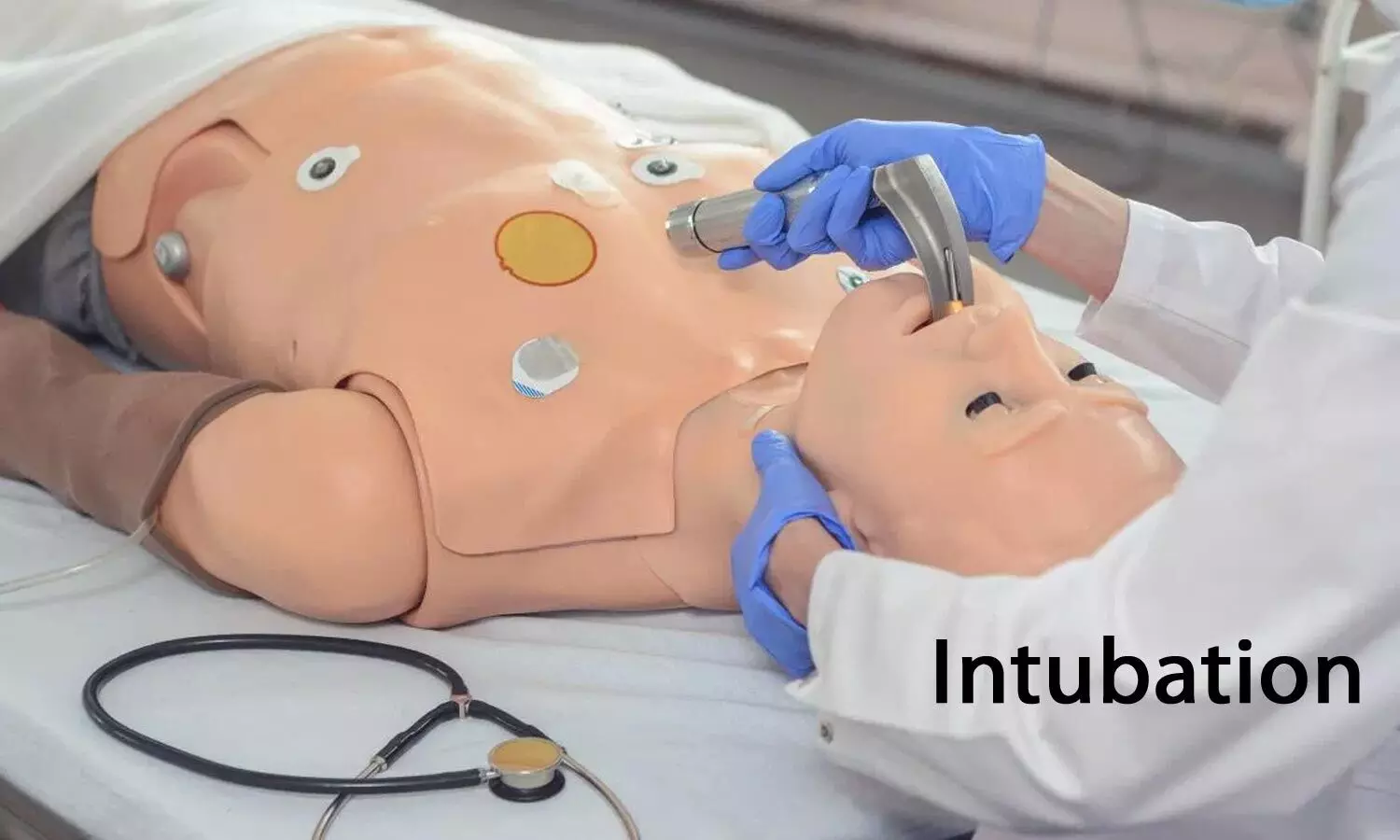
Recent prospective observational study evaluated the effectiveness of ultrasonography (USG) in predicting difficult laryngoscopies through measurements of key parameters such as the tongue-to-oral height ratio (TTOHR) and anterior neck soft tissue distances. The study, involving 120 patients undergoing elective surgery under general anesthesia, focused on assessing four USG parameters: skin-to-hyoid bone distance (SHBD), skin-to-epiglottis distance (SED), skin-to-thyrohyoid membrane distance (STHMD), and TTOHR. The primary outcome was determined using modified Cormack-Lehane (CL) grading post-laryngoscopy.
### Methodology – Patients aged 18-65 years without a known difficult airway were included, while those requiring fiberoptic intubation or with altered neck anatomy were excluded. Airway USG was conducted before anesthesia by an experienced investigator, measuring the four USG parameters in a neutral neck position. Each patient’s laryngoscopy was assessed and graded by an independent anesthesiologist. Statistical analysis included ROC curve analysis, multivariable logistic regression, and comparisons of various predictive models. A cutoff value for each parameter was established to optimize diagnostic performance.
### Results – Out of 120 patients, 11.6% experienced difficult laryngoscopy (DL) while 6.6% had difficult intubation (DI). SED exhibited the highest diagnostic performance with an area under the curve (AUC) of 0.95, 100% sensitivity, and 89% specificity at a cutoff of 1.87 cm. STHMD and TTOHR followed closely with AUCs of 0.94 and 0.92, respectively. Notably, TTOHR showed the highest diagnostic accuracy of 97%, indicating significant predictive value. Combining parameters into models enhanced predictive capabilities, with one model integrating TTOHR, SHBD, and STHMD emerging as the best predictor for DL.
### Limitations – The study’s limitations include a relatively small and homogeneous sample size, limiting generalizability to broader populations or different ethnicities. Additionally, the measurements were conducted by a single investigator, which poses a risk of variability not assessed in the study. The dynamic nature of the tongue and the lack of evaluation of DI accuracy across a larger group further constrain the findings.
### Conclusion – Results demonstrated that USG parameters, particularly SED, STHMD, and TTOHR, are effective in predicting difficult laryngoscopy, with models leveraging these parameters significantly enhancing predictive performance in unexpected difficult airway scenarios.
Key Points
– A prospective observational study evaluated the effectiveness of ultrasonography (USG) in predicting difficult laryngoscopies by measuring parameters such as the tongue-to-oral height ratio (TTOHR) and anterior neck soft tissue distances in 120 elective surgery patients under general anesthesia.
– Key USG parameters assessed included skin-to-hyoid bone distance (SHBD), skin-to-epiglottis distance (SED), skin-to-thyrohyoid membrane distance (STHMD), and TTOHR, with the primary outcome being assessed via modified Cormack-Lehane (CL) grading post-laryngoscopy.
– The study included patients aged 18-65 years without known difficult airways, while excluding those needing fiberoptic intubation or with altered neck anatomy. Measurements were taken by an experienced investigator in a neutral neck position, and laryngoscopies were graded by an independent anesthesiologist.
– Among the 120 participants, 11.6% experienced difficult laryngoscopy (DL) and 6.6% had difficult intubation (DI). SED demonstrated the best diagnostic performance with an AUC of 0.95, achieving 100% sensitivity and 89% specificity at a cutoff of 1.87 cm, while TTOHR showed a diagnostic accuracy of 97%.
– Predictive capabilities improved by combining multiple parameters into models, with a particular model incorporating TTOHR, SHBD, and STHMD identified as the best predictor for difficult laryngoscopy (DL).
– Limitations of the study include a relatively small and homogeneous sample size, the use of a single investigator for measurements, potential variability in tongue dynamics, and the lack of evaluation of DI accuracy across a larger cohort, which may restrict the generalizability of the findings.
Reference –
Nandi S, Panda A, Mishra N, Rao PB, Srinivasan A. Evaluation of the predictive value of tongue height to oral cavity height ratio and anterior neck soft tissue measurements for difficult laryngoscopy in patients with unanticipated difficult airway: A prospective observational study. Indian J Anaesth 2025;69:918-25
Powered by WPeMatico
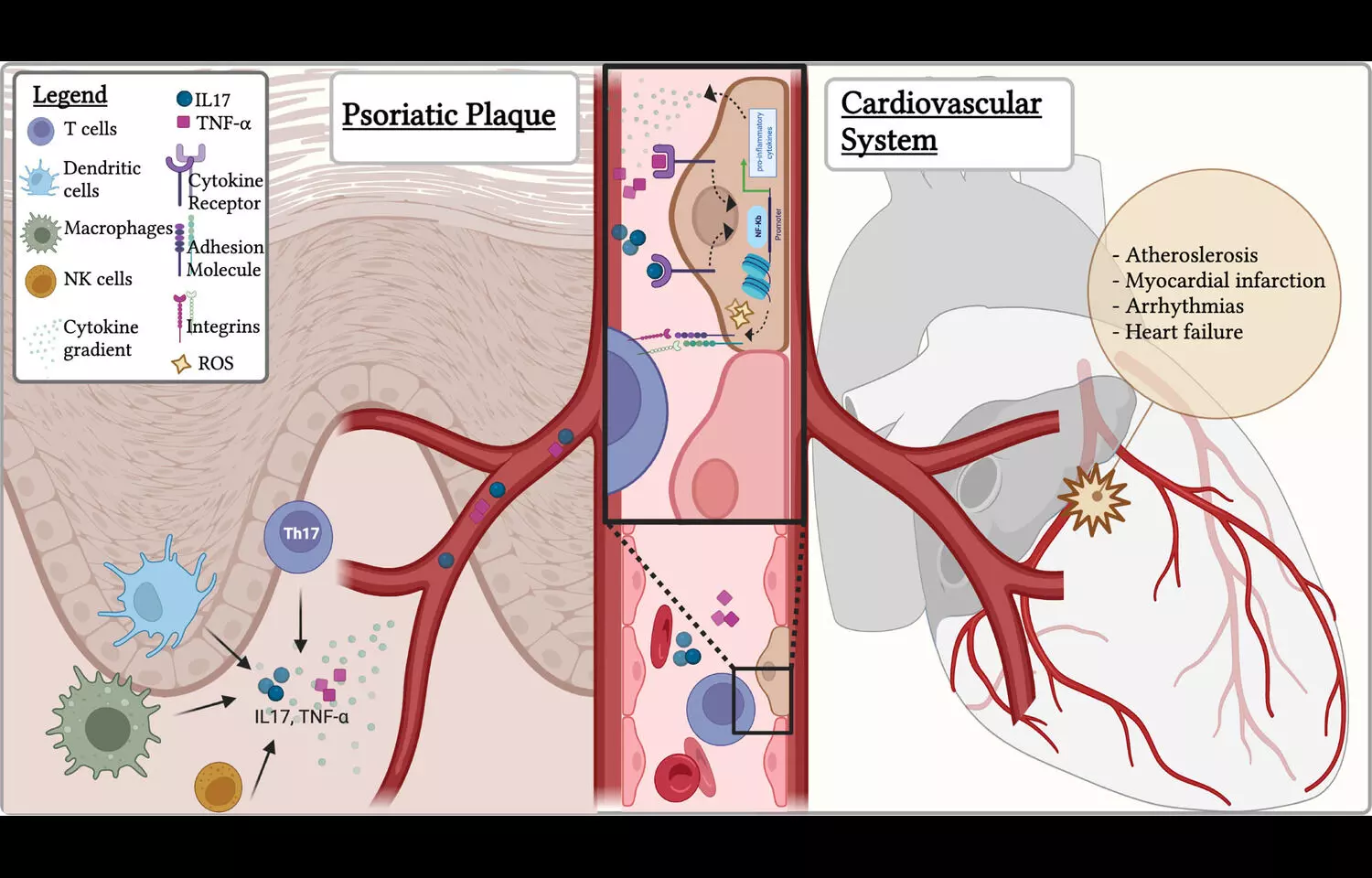
Psoriasis is a chronic inflammatory disease that affects not only the skin but also systemic health, including cardiovascular risk. Recent research has highlighted that treatment choice in psoriasis can significantly influence the likelihood of major cardiovascular events. In a new study, methotrexate (MTX) and tumor necrosis factor inhibitors (TNFi) emerged as the safest systemic therapies with respect to cardiovascular outcomes.
The study evaluated the incidence of myocardial infarction, stroke, and cardiovascular mortality in patients receiving various systemic treatments for psoriasis. Patients treated with MTX and TNFi had a noticeably lower risk of these adverse events compared to those on other systemic agents such as cyclosporine, acitretin, or newer biologics targeting other pathways. The findings suggest that these therapies provide cardioprotective effects, likely due to their potent anti-inflammatory properties, which help mitigate the systemic inflammation that contributes to atherosclerosis. Methotrexate, long used as a first-line systemic therapy, demonstrated not only dermatologic efficacy but also measurable cardiovascular benefit, reinforcing its role in patients with psoriasis who have elevated cardiovascular risk factors. TNFi therapies, widely used in moderate-to-severe cases and in psoriatic arthritis, also showed substantial reductions in cardiovascular events, positioning them as preferred options for patients with dual dermatologic and cardiovascular concerns. Importantly, the study highlighted that cardiovascular safety is not uniform across all systemic psoriasis treatments. Some therapies showed neutral or uncertain effects, emphasizing the need for clinicians to consider cardiovascular profiles alongside efficacy when prescribing systemic medications. The investigators recommend that dermatologists collaborate with cardiologists in managing patients with psoriasis and comorbid cardiovascular risk factors. Additionally, they call for continued research into the mechanisms by which systemic anti-inflammatory therapies reduce cardiovascular risk and long-term outcomes associated with prolonged use.
Powered by WPeMatico
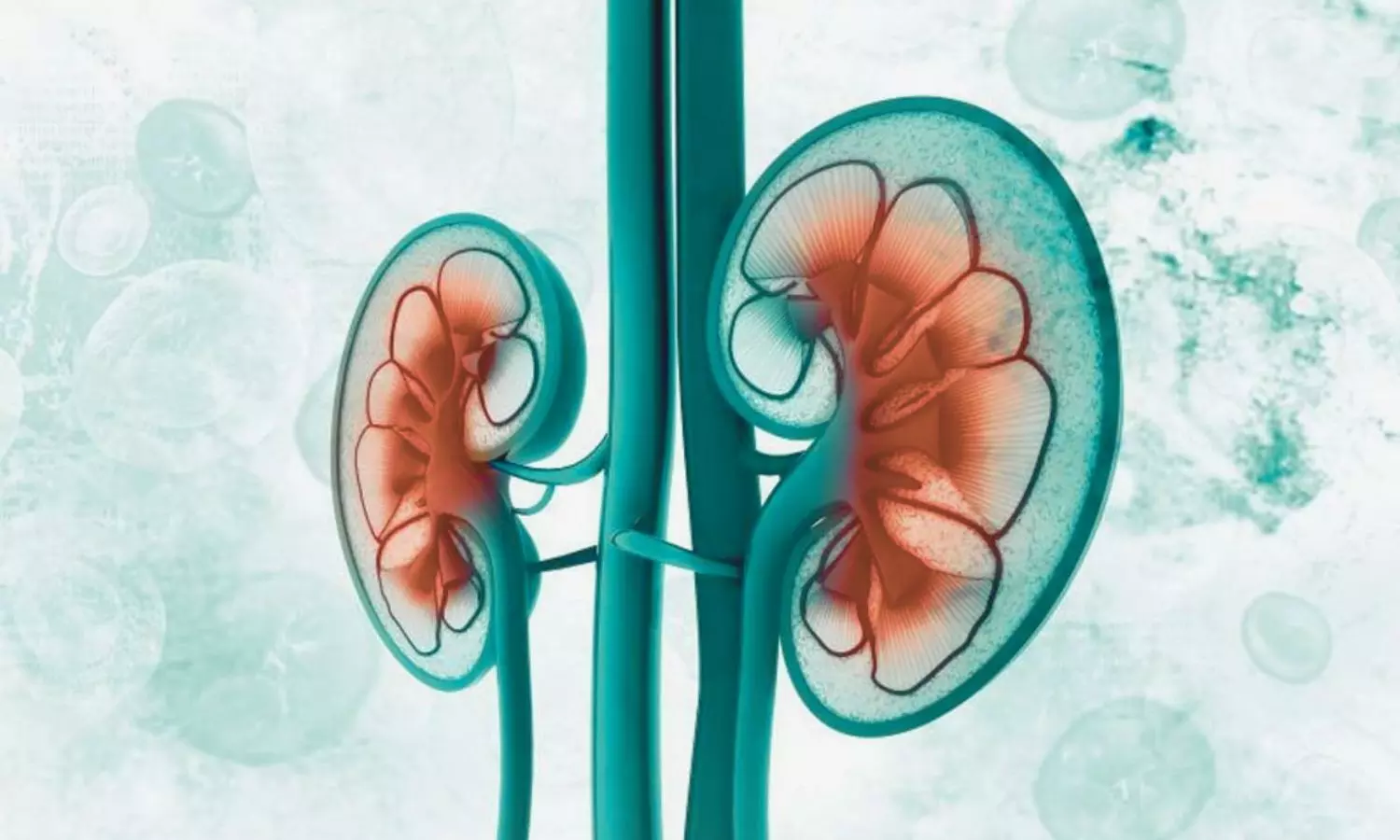
Chronic kidney disease (CKD) is a major health issue worldwide. Many patients end up requiring regular dialysis to avoid kidney failure and stay alive. Despite the severity of the condition, there are currently no drugs available that improve kidney function. A research group led by Tohoku University Graduate School of Medicine’s Professor Takaaki Abe has found a remarkable solution to treat patients with CKD by co-opting a drug typically used for constipation. This is the first time that this drug (lubiprostone) was shown to prevent the decline of renal function in patients with CKD.
“We noticed that constipation is a symptom that often accompanies CKD, and decided to investigate this link further,” explains Abe. “Essentially, constipation disrupts the intestinal microbiota, which worsens kidney function. Working backwards, we hypothesized that we could improve kidney function by treating constipation.”
To address this issue, the group conducted a multicenter Phase II clinical trial (LUBI-CKD TRIAL) at nine Japanese medical institutions, enrolling 150 patients with moderate CKD. This study evaluated the effects of lubiprostone on kidney function. The results showed that, compared to the placebo group, the decline in kidney function (defined as the estimated glomerular filtration rate: eGFR) was suppressed in a dose-dependent manner in patients treated with 8 µg or 16 µg of lubiprostone.
The researchers also investigated the mechanism underlying how this effect occurred. They found that lubiprostone increases spermidine production, which improves mitochondrial function by promoting bacterial growth in the gut. The improved mitochondrial function was seen to exert a renoprotective effect – suppressing further kidney damage.
Going forward, the research team has plans to validate the trial results in a larger population (Phase 3 clinical trial) and advance the exploration of biomarkers that predict treatment efficacy. Their goal is to provide each patient with CKD the optimal treatment plan tailored to their needs. This discovery has the potential to significantly transform the conventional approach to CKD treatment, which primarily focuses on reducing uremic toxins.
These findings suggest a new therapeutic strategy in which laxatives suppress renal function decline. This strategy is expected to contribute to the development of treatments for not only CKD, but also mitochondrial dysfunction disorders. The results of this study were published in the scientific journal Science Advances on August 30, 2025.
Reference:
Shun Watanabe et al. ,Lubiprostone in chronic kidney disease: Insights into mitochondrial function and polyamines from a randomized phase 2 clinical trial.Sci. Adv.11,eadw3934(2025).DOI:10.1126/sciadv.adw3934
Powered by WPeMatico
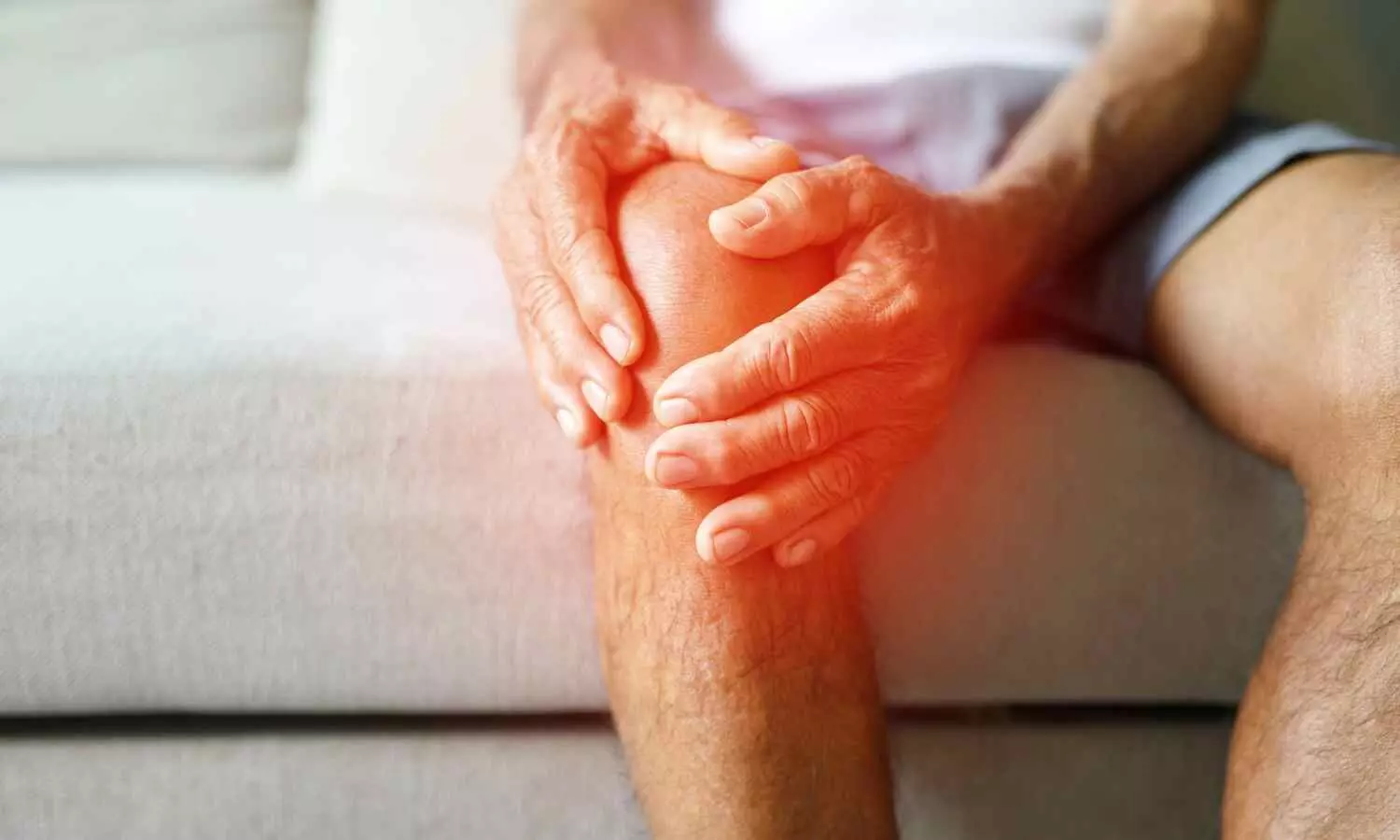
Young adults who experience grinding or clicking sounds in their knees post-surgery may be alarmed, but new research from La Trobe University suggests these sounds may not signal early-onset osteoarthritis.
Knee crepitus, the sound of cracking or grinding in the knee joint is very common across all age groups. The study, published in the Arthritis Care & Research journal, followed 112 young adults after anterior cruciate ligament (ACL) reconstruction, using Magnetic Resonance Imaging (MRI) scans and patient-reported outcomes to track osteoarthritis signs over five years.
La Trobe graduate researcher and physiotherapist Jamon Couch said that while knee crepitus was linked to cartilage damage and worse symptoms one year after surgery, it did not predict joint damage over time.
“We found that those with knee crepitus demonstrated more than two and a half times greater rates of full-thickness cartilage defects in the kneecap area, with more pain and poorer function early on,” Jamon said.
“But over the next four years, those with crepitus did not experience worse pain and function compared to those without knee crepitus.”
Research shows about 50 per cent of people with an ACL rupture will develop osteoarthritis symptoms and structural changes within a decade of injury, nearly 15 years earlier than the uninjured.
The findings challenge the idea that crepitus should be used to diagnose or predict early osteoarthritis following traumatic knee injury in young adults.
Dr Adam Culvenor, head of the Knee Injury Research Group at La Trobe’s Sport and Exercise Medicine Research Centre (LASEM) said the research would be reassuring for younger patients worried that noisy knees may be a red flag signalling their joint was deteriorating after surgery.
“It also highlights the importance of staying active and engaged in rehabilitation to avoid or delay osteoarthritis,” Dr Culvenor said.
The researchers say the study supports a more nuanced approach to diagnosing early-stage osteoarthritis and encourages health professionals to avoid overinterpreting crepitus in young, active patients.
Reference:
Jamon L Couch BHlthSc, MPhysioPrac, Knee crepitus and osteoarthritis features in young adults following traumatic knee injury, Arthritis Care & Research, https://doi.org/10.1002/acr.25637
Powered by WPeMatico

New Delhi: The Ministry of Education has released the latest National Institutional Ranking Framework (NIRF) 2025 for pharmacy institutions, with Jamia Hamdard, New Delhi, once again emerging as the country’s top-ranked institute in the field. The NIRF Ranking 2025 highlights the standard of teaching, research, infrastructure, innovation, and perception in these institutions.
The rankings were declared by the Ministry of Education on September 4, 2025. Union Minister of Education Shri Dharmendra Pradhan announced the India Rankings 2025, prepared under the NIRF framework that was first introduced in 2015. The event was also attended by Sukanta Majumdar, Minister of State for Education and DoNER; Dr Vineet Joshi, Secretary (HE); Prof. T.G. Sitharam, Chairman, AICTE; Prof. Anil Sahasrabudhe, Chairman, NETF, NAAC and NBA; and Dr Anil Kumar Nassa, Member Secretary, NBA, along with directors and vice chancellors of leading institutions.
According to the NIRF 2025 rankings in Pharmacy, Jamia Hamdard, New Delhi, has once again claimed the top position with a score of 86.59. Jamia Hamdard continues its consistent dominance in pharmaceutical education and research. It is followed by Birla Institute of Technology & Science (BITS), Pilani, in second place (82.28), while Panjab University, Chandigarh, secured the third position (76.39).
Other institutes in the Top 10 list represent a wide geographical spread across the country, covering Delhi, Rajasthan, Punjab, Tamil Nadu, Karnataka, Telangana, and Maharashtra.
Also Read: NIRF 2025 Rankings: AIIMS New Delhi in No 1 spot, Here are India’s top 40 Dental colleges
Top 10 Pharmacy Colleges in India – NIRF Ranking 2025
1. Jamia Hamdard, New Delhi – 86.59
2. Birla Institute of Technology & Science (BITS), Pilani – 82.28
3.Panjab University, Chandigarh – 76.39
4. JSS College of Pharmacy, Ooty (Tamil Nadu) – 76.14
5. National Institute of Pharmaceutical Education and Research (NIPER), Hyderabad (Telangana) – 75.64
6. Institute of Chemical Technology (ICT), Mumbai (Maharashtra) – 74.77
7. JSS College of Pharmacy, Mysore (Karnataka) – 73.38
8.Manipal College of Pharmaceutical Sciences, Udupi (Karnataka) – 73.25
9. NIPER, Mohali (Punjab) – 70.96
10. SRM Institute of Science and Technology, Chennai (Tamil Nadu) – 70.84
The following are the top 50 Medical colleges across India, as per the NIRF Ranking 2025-
|
Rank |
Institute |
State |
Score |
|
1 |
Jamia Hamdard, New Delhi |
Delhi |
86.59 |
|
2 |
Birla Institute of Technology & Science (BITS), Pilani |
Rajasthan |
82.28 |
|
3 |
Panjab University, Chandigarh |
Chandigarh |
76.39 |
|
4 |
JSS College of Pharmacy, Ooty |
Tamil Nadu |
76.14 |
|
5 |
NIPER Hyderabad |
Telangana |
75.64 |
|
6 |
Institute of Chemical Technology (ICT), Mumbai |
Maharashtra |
74.77 |
|
7 |
JSS College of Pharmacy, Mysore |
Karnataka |
73.38 |
|
8 |
Manipal College of Pharmaceutical Sciences, Udupi |
Karnataka |
73.25 |
|
9 |
NIPER Mohali |
Punjab |
70.96 |
|
10 |
SRM Institute of Science and Technology, Chennai |
Tamil Nadu |
70.84 |
|
11 |
SVKM’s Narsee Monjee Institute of Management Studies, Mumbai |
Maharashtra |
70.59 |
|
12 |
NIPER Guwahati |
Assam |
69.64 |
|
13 |
Lovely Professional University, Phagwara |
Punjab |
68.59 |
|
14 |
Amrita Vishwa Vidyapeetham, Coimbatore |
Tamil Nadu |
68.39 |
|
15 |
Chandigarh University, Mohali |
Punjab |
68.34 |
|
16 |
Chitkara University, Rajpura |
Punjab |
66.85 |
|
17 |
NIPER Raebareli |
Uttar Pradesh |
66.65 |
|
18 |
Amity University, Gautam Budh Nagar |
Uttar Pradesh |
66.27 |
|
19 |
Delhi Pharmaceutical Sciences and Research University |
Delhi |
66.24 |
|
20 |
Central University of Punjab, Bathinda |
Punjab |
64.73 |
|
21 |
NIPER Ahmedabad, Gandhinagar |
Gujarat |
64.44 |
|
22 |
Banasthali Vidyapith |
Rajasthan |
63.96 |
|
23 |
Babasheb Bhimrao Ambedkar University, Lucknow |
Uttar Pradesh |
62.29 |
|
24 |
Jadavpur University, Kolkata |
West Bengal |
62.18 |
|
25 |
I.S.F. College of Pharmacy, Moga |
Punjab |
61.96 |
|
26 |
Maharishi Markandeshwar, Ambala |
Haryana |
60.89 |
|
27 |
Central University of Rajasthan, Kishangarh |
Rajasthan |
60.44 |
|
28 |
Birla Institute of Technology, Ranchi |
Jharkhand |
59.97 |
|
29 |
NIPER Kolkata |
West Bengal |
59.12 |
|
30 |
NIPER Hajipur |
Bihar |
58.44 |
|
31 |
AU College of Pharmaceutical Sciences, Andhra University, Visakhapatnam |
Andhra Pradesh |
58.19 |
|
32 |
Nirma University, Ahmedabad |
Gujarat |
57.08 |
|
33 |
GITAM (Gandhi Institute of Technology and Management), Visakhapatnam |
Andhra Pradesh |
56.66 |
|
34 |
Poona College of Pharmacy, Pune |
Maharashtra |
56.28 |
|
35 |
Dr. D.Y. Patil Institute of Pharmaceutical Sciences and Research, Pune |
Maharashtra |
56.18 |
|
36 |
Sri Ramachandra Institute of Higher Education and Research, Chennai |
Tamil Nadu |
55.99 |
|
37 |
Noida Institute of Engineering and Technology (Pharmacy Institute), Greater Noida |
Uttar Pradesh |
55.66 |
|
38 |
SVKM’s Dr. Bhanuben Nanavati College of Pharmacy, Mumbai |
Maharashtra |
55.55 |
|
39 |
Suresh Gyan Vihar University, Jaipur |
Rajasthan |
55.28 |
|
40 |
Integral University, Lucknow |
Uttar Pradesh |
54.97 |
|
41 |
Parul University, Vadodara |
Gujarat |
54.89 |
|
42 |
Annamalai University, Annamalainagar |
Tamil Nadu |
54.68 |
|
43 |
Maharshi Dayanand University, Rohtak |
Haryana |
54.40 |
|
44 |
Shoolini University of Biotechnology and Management Sciences, Solan |
Himachal Pradesh |
53.81 |
|
45 |
L. M. College of Pharmacy, Ahmedabad |
Gujarat |
53.66 |
|
46 |
Maharaja Sayajirao University of Baroda, Vadodara |
Gujarat |
53.45 |
|
47 |
Guru Ghasidas Vishwavidyalaya, Bilaspur |
Chhattisgarh |
53.36 |
|
48 |
G.L.A. University, Mathura |
Uttar Pradesh |
53.32 |
|
49 |
Guru Jambheshwar University of Science and Technology, Hisar |
Haryana |
53.03 |
|
50 |
KLE College of Pharmacy, Belgaum |
Karnataka |
52.86 |
Powered by WPeMatico
